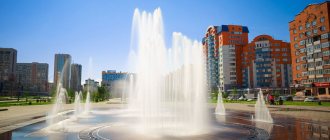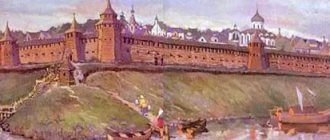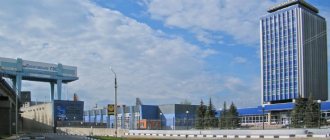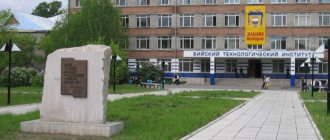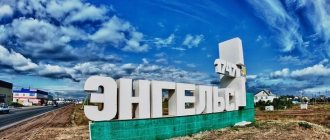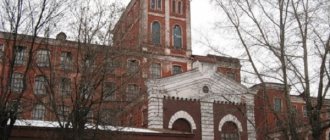Back in the 13th century, a fortress was built on the Slavyanka River to protect the borders of Veliky Novgorod. It was called Gorodok on Slavyanka. Catherine loved to go hunting in the local forests; in 1777, she gave these lands to her son Paul, and two houses were built here: for the Grand Duke himself - Paullust, for his wife - Marienthal.
In 1780, on the site of Paul's house, the architect Cameron erected the first palace of Pavlovsk. And the city was already growing around it: houses of the townspeople were being built, gardens and orchards were being cultivated. As soon as he ascended the throne, Paul ordered that the village of Pavlovskoye be considered the city of Pavlovsk. Today this city is part of St. Petersburg.
Pavlovsk Palace
Address: st. Sadovaya, 20 Phone: Website: https://pavlovskmuseum.ru/ Opening hours: 10.00-18.00 closed Friday (may vary depending on the season and weather conditions). Cost: adults: 250 rubles, pensioners: 120, schoolchildren: 100; Pink Pavilion: adults: 100 rubles, students: 50 rubles.
It was originally intended as a noble estate, but after the coronation, Emperor Paul decided to turn it into a summer palace. The palace was built over 50 years, the architects and sometimes the plans for its construction changed. Work on the construction of the palace began with Charles Cameron, and its interior decoration was completed by Voronikhin and Kvarneghi.
The palace at first was a typical noble estate, then Quarneghi turned it into a mansion with three floors and open galleries, then for the coronation of Paul the palace acquired a monumental appearance, for many years numerous galleries were added to the palace, and the architect Vicenzo Brenna also added a wing on each side .
After a fire in 1803, the palace was reconstructed. During the Great Patriotic War, the premises of the palace were looted.
Now the palace has been completely restored. There are 300 majestic, truly royal halls here, ready to receive guests.
How to get to Pavlovsk from St. Petersburg
You can get to Pavlovsk from St. Petersburg in different ways: by train, by minibus, by private car, or with organized excursions, which often start directly from the center of St. Petersburg. Travel time varies depending on which way to get there you choose.
By train
You can get to Pavlovsk by train from the Kupchino station and Vitebsky railway station. Travel time will be approximately 20 minutes. Schedule of trains leaving the Kupchino station: 05.59 (on weekdays), 06.41, 06.51, 07.06 (on weekdays), 07.22, 07.37 (on weekdays), 07.54, 08.09 (except Sundays), 08.30 (on Fridays), 08.46, 08.55 (on Saturdays), 09.07 (on weekdays), 09.14 (except Saturdays), 09.34 (on Saturdays), 09.55, 10.15, 10.46 and 11.08 (on weekends), 11.26 and 12.05 (on weekends), 12.30 (on weekdays), 13.10, 13.53, 14.31, 14.54, 15.26, 15.56, 16.35, 17.27, 17.57 (on Fridays), 18.08 (on Fridays), 18.19, 18.48 (on Fridays), 18.56, 19.14 (on weekdays), 19.4 3, 20.03, 22.12, 23.30 daily unless otherwise stated.
Schedule of trains leaving Vitebsky Station: 05.43 (on weekdays), 06.25, 0635, 06.50 (on weekdays), 07.06, 07.21 (on Saturdays), 07.38, 07.50 (except Sundays), 08.14 (on Fridays), 08.28, 08.39 ( on Saturdays), 08.50 (on weekdays), 09.18 (on Saturdays), 09.38 (on weekends), 09.59, 10.30 and 10.53 (on weekends), 11.10 and 11.50 (on weekends), 12.14 (on weekdays), 12.54, 13.37 ( except Sunday), 14.16, 14.38, 15.10, 15.38, 16.19, 17.11, 17.28 (on weekdays), 17.40 (on Fridays), 17.51, 18.02, 18.10 (on weekdays), 18.28 (on Fridays), 18.40, 18.57 (on everyday life ), 19.27, 19.47, 21.55, 23.14 daily, unless otherwise stated.
Train schedule from Pavlovsk to Kupchino station: 05.27, 05.59 (on weekdays), 06.20, 06.39, 06.58, 07.10, 07.24 (except weekends), 07.34, 07.48 (on weekdays), 07.59, 08.11, 08.19 (on weekdays) m), 08.31 (on weekdays), 08.45 (on weekdays), 09.13, 09.26, 09.48 (on weekdays), 10.05, 10.27, 11.01, 11.22 (on weekdays), 11.22 (on weekends), 11.39, 12.33 (on weekends), 12.45 and 13.25 (on Saturdays), 13.44 (on weekends), 14.02 (on Saturdays), 14.25, 14.42, 15.08, 15.49 (on weekends), 16.48, 17.13, 17.42, 18.07, 18.42 (except Saturdays), 18.57 (on weekdays), 19.39, 20.03, 20.24, 20.59, 21.15, 21.54 (Wednesdays), 22.02 (Fridays), 22.24, 22.46 (Fridays) daily unless otherwise stated.
Andrey Korchagin/Slavyanka River in Pavlovsky Park
By minibus
By minibus you can go from the Moskovskaya metro station at number 299 to the Pavlovsky Palace and at number 545 to the Pavlovsky station; You can also get from the Zvezdnaya metro station by minibus No. 363 to Pavlovsky station and by bus No. 179 to Pavlovsky station; You can also leave from the Kupchino metro station by minibus No. 286 to the Pavlovsky Palace, by minibus No. 545A to the Pavlovsky Station, by minibus No. 521 to the Pavlovsky Palace. Travel time depends on the selected metro station. The fastest way to leave is from the Kupchino station.
By car
If you travel by personal car, then you should stick to Vitebsky Avenue (about 32 km and 50 minutes on the road). You can also get there along Pulkovskoye Highway (34 km, 55 minutes travel time). Alternatively, you can use the Petersburg highway, then the distance will be 37 km and the travel time will be almost an hour. Also, when going on the road, take into account the traffic and congestion at a particular time.
With excursion
If you are interested in the opportunity not only to get to the park, but also to get acquainted with the history of the palace and park complex, then you can take advantage of organized excursions from St. Petersburg to Pavlovsk. Most often, these are bus group excursions, but there are also individual or mini-group excursions. Often excursions to Pavlovsk are offered right on the street, in the center of St. Petersburg, by various travel companies. You can also book an excursion of interest in advance through specialized services, for example, on Tripster or Sputnik8. Such excursions will allow you to get acquainted with the history and architectural features of the museum-reserve.
deepskyobject/The beauty of Pavlovsk Park
Pavlovsky Park
This is one of the largest landscape parks in our country, occupying 600 hectares of land. It is divided into seven landscape areas:
- Palace area - this includes the Own Garden, designed in the style of French and Dutch gardens; the center is a linden alley along which carriages drove up to the front porch. Large circles are carpet flower beds and tuff terraces; in the same area there is the famous Labyrinth, built from topiary bushes.
- The valley of the Slavyanka River is an area planted with silver willows and oaks, and there are also numerous plantings of dwarf bushy trees. There are cascades, spills and dams on the river; There are numerous bridges across the river: Gorbaty, Chugunny, Viskontiev and others.
- White Birch is an area designed by Pietro Gonzago in the style of a flat Russian park.
- Old Sylvia - this area is distinguished by a regular layout: here the paths, like rays, run in different directions from the central square.
- New Sylvia is an area of dense deciduous forest, in the thicket of which the Mausoleum of the benefactor spouse is hidden.
- Red Valley - among the ancient oaks and silver willows there are Ruins, artificial ancient ruins.
- Valley of Ponds - deep dark ponds surrounded by a wall of ancient trees.
The park has a large number of pavilions that harmoniously fit into the landscape. All pavilions are divided into two groups: memorial and classical.
The marble and bronze sculptures placed along the alleys of the park are of great artistic value. Bridges were built across the Slavyanka River, which flows here.
Mausoleum to the benefactor spouse
Address: Pavlovsky Park, New Sylvia district
A mausoleum was built in the depths of Pavlovsky Park. There is a dense and gloomy forest around it, the mausoleum was specially built here, in a place of loneliness and sadness, to emphasize its purpose.
Inside it there is a false tombstone (cenotaph), built by the architect I. Martos. Above the tombstone is a stone figure of a young woman, hugging in inescapable grief an urn containing the ashes of her beloved husband. This figure is a symbol of grief for all the dead.
Temple of Friendship
Address: Pavlovsky Park, Slavyanka River Valley area
The rotunda was designed and built by the architect Cameron. Concerts and intimate parties were held in this round building; next to the pavilion there was a small kitchen in the form of a hut, where food was prepared.
The pavilion is decorated only with modest bas-reliefs on the theme of love and friendship. The center of the rotunda is a statue of Catherine in the image of Caeceser. In the summer, the pavilion hosts exhibitions of sculpture from the museum's collections.
Pink Pavilion
Address: Pavlovsky Park, Belaya Bereza district
The romantic building of the architect Voronikhin is built of wood, but one gets the absolute impression that its walls are made of stone. It is surrounded by a magnificent rose garden, which gives the pavilion its name. But even inside it, everything was decorated with images of roses: lamps, vases, furniture, stucco on the ceiling and a huge service.
The harps built into the windows sound from the slightest breeze.
Poets, writers, and artists were received here. These walls remember Batyushkov, Zhukovsky, Karamzin.
Here Empress Maria Feodorovna met Alexander, her son, who had returned from Paris with victory over Napoleon. To make it possible to organize a reception in honor of this event, a special hall was added to the pavilion. This holiday went down in history.
Other entertainment
Squirrels are an unofficial attraction of Pavlovsk Park. Of course, they can be found not only here. But it is believed that the animals in this park are especially trusting and tame. If you bring some nuts with you, you can feed the Pavlovian squirrels
from the palm of your hand.
In the summer, you can rent a bicycle or Segway in the park and ride past the main attractions. There are also boat rentals and a trampoline. In winter, many people come here to ski or sled. And, of course, don't forget to take your camera with you. Even if a photo shoot was not part of your plans, it is difficult to resist taking a few photos in Pavlovsky Park.
Squirrel in Pavlovsky Park @pupsalinochka
Church of Mary Magdalene
Address: st. Sadovaya, 17 Telephone: Opening hours: 9.00-19.00
This Orthodox church was erected in 1784 with donations from Empress Maria Feodorovna as a court church by the architect Kvarneghi. For a long time, there was an almshouse, an orphanage, a hospital and a free pharmacy.
Military relics were kept in the church: captured banners and standards captured by the Russian army in its campaigns.
There are monuments here - cenotaphs (false tombstones) to Count Panin, Prince A. Burakin, tutor to Emperor Alexander Zagryazhsky. The last tombstone, in the form of a white marble mausoleum with a mourning woman, was built by the architect Marcos.
Currently it is a functioning temple.
Monument to composer Johann Strauss
This is a relatively young monument - it was opened in 2003. The famous composer first came to Russia on tour in 1856, and since then, for 10 years, Strauss conducted the Pavlovsk summer concerts. The orchestra under his leadership achieved the highest skill, which was noted by music critics.
The monument to the composer is a smaller copy of the sculpture installed in Vienna in 1907.
The monument is located near the entrance to Pavlovsky Park, in the park at the intersection of Sadovaya and Zverenitskaya streets.
Cathedral of St. Nicholas the Wonderworker
Address: st. Artilleriyskaya, 2 Telephone: Opening hours: 9.00-19.00
The temple was built in 1841, was a camp church of the Exemplary Cavalry Regiment and was originally made of wood. There was no heating and no permanent servants. The service was conducted by various local priests.
Then, by decree of Grand Duke Constantine, in place of the wooden temple, the architect Carboniere erected a stone one in the Russian style traditional for that time. It was illuminated in 1902 in the presence of the sovereign's family.
The church was closed in 1930, but in 1941 services in the temple resumed. After the end of the war, the temple was closed again, and only in 1991 it was transferred to the diocese.
The main artistic attraction of the church is the wooden iconostasis, it was made according to the sketches of the artist Subbotin.
Church of Catherine and the Nativity of the Blessed Virgin Mary
Address: Pavlovsky district, pos. Dynamo, st. Parkovaya, 1 Phone: Website: st-ekaterina.ucz.ru Opening hours: 9.00-19.00
The church in the style of Louis the Fourteenth, unusual for the Russian eye, was erected with the money of Count Martyn Skavronsky. It was rebuilt several times. In 1871 it was reconstructed, giving it its original appearance.
The temple is two-story: on the first floor there is the Church of the Great Martyr Catherine, on the second - the Church of the Nativity of the Blessed Virgin Mary. All gilded carved wooden iconostases were created according to the design of A.P. Bryullov, a Russian architect, the money for their creation was allocated by the well-known Countess Samoilova.
The complex is located in a picturesque location on a hill near the Slavyanka River, and it seems that the temple is floating above the plain.
At the beginning of the war, the bell tower was blown up to prevent the Germans from using it as a reference point for aiming guns. Now it has been almost completely recreated.
Currently ─ it is an active church; The ancient cemetery located nearby has many interesting tombstones.
Pavlovsk Amusing Fortress (Bip Fortress)
Address: Nadgornaya st., 16
The fortress was built near the Slavyanka and Tyzva rivers on the site of the Marienthal house. Architect Quadri built a pleasure castle in two years, but according to all the rules of military fortification.
That is why the building was registered with the military department for a long time. Every evening the drawbridge was raised in the fortress and a cannon was fired, this continued until 1917. After the death of Emperor Paul, the first school in Russia for deaf and mute children was established in the castle.
In 1919, Yudenich's headquarters was located here. During the Great Patriotic War, the fortress was almost completely destroyed and was a stone box.
The name BIP is interpreted in different ways, one of these interpretations is: “Paul’s Big Toy.”
At the beginning of this century it was restored. Now there is a hotel and restaurant here.
State Museum-Reserve "Pavlovsk"
The museum-reserve is the main attraction of Pavlovsk. This place was the imperial residence. The palace and park ensemble was built over 50 years, from the 18th to the early 19th centuries. Famous architects - Cameron, Brenna, Quarenghi, Voronikhin, Rossi, Gonzago and thousands of Russian masters created it for decades.
Great Pavlovsk Palace
Pavlovsk Palace is the center of the museum-reserve. It was built on the banks of the Slavyanka River, and you can see it even from the far corners of the city. The palace was built in the 80s of the 18th century by the famous architect Charles Cameron.
The idea of the palace came to Paul I during a trip to Europe in 1782. Inspired by the architecture of Austria, Italy, and France, he decided to build an equally magnificent palace. The imperial family purchased furniture, porcelain and silk in France, Venetian glass, copies of ancient sculptures and paintings in Italy. All items were brought to Pavlovsk to decorate the palace.
After Paul I ascended the throne, the residence was expanded: several floors and rooms were added. After his death, his son, Nicholas I, became the owner of the palace. He issued a decree on organizing a museum, the exhibits of which were relics brought by his parents.
Also, by order of Emperor Nicholas, a monument to Paul I was erected on the square in front of the palace. The Emperor is depicted looking at Linden Alley, where guests enter from. This monument is a copy of another statue of Paul I - the first one was installed in front of the Gatchina Palace.
Monument to Paul I in front of the Pavlovsk Palace
The refined and austere appearance of the Pavlovsk Palace contrasts with the splendor of its interior decoration. True, the original interiors created according to the designs of V. Brenna and G. Quarenghi no longer exist.
On January 10, 1803, for an unknown reason, a large fire broke out in the palace and raged for several hours. The central building was especially damaged by the fire, some of the halls in which were completely burned out.
The restoration of the palace was entrusted to the architect A. Voronikhin. In a short time - in less than two years - the Pavlovsk Palace was revived. And the formation of the Pavlovsk palace ensemble was completed in 1822-1824, when the architect K. Rossi built a library building.
Among the interiors of the palace, the Italian and Greek halls attract special attention.
The Italian hall, above which there is a skylight-dome, was designed by Charles Cameron, but was designed mainly by V. Brenna and later by A. Voronikhin. This room contains antique marble sculptures.
Italian hall
The Greek Hall, also created by V. Brenna and A. Voronikhin, got its name because it was decorated in an antique spirit: slender columns of greenish marble, antique statues in niches, lamps suspended on long chains between the columns.
Greek Hall
The Art Gallery created by V. Brenna is noteworthy. This hall is a tribute to the tradition of the 18th century, when such galleries were an obligatory part of Russian palaces. The Art Gallery contains paintings by Italian and Dutch masters.
The Great or Throne Hall is striking in its size - 400 square meters. It was originally created as a formal dining room, but later the imperial throne of Paul I was installed here.
Throne room
Currently, the palace houses a museum. Here guests can see:
- living rooms with household items from the 18th century, including the emperor’s wife with her personal belongings;
- memorial office of A.I. Zelenova - director of the palace from 1941 to 1979, she walked from Pavlovsk to St. Isaac's Cathedral to preserve exhibits during the blockade, after the war she made every effort to reconstruct the palace and not demolish it;
- Gonzago Gallery - an architectural and fresco ensemble of the 19th century, the largest example of outdoor fresco painting in Northern Europe;
- a costume museum with authentic clothes of the imperial family, including the outfits of Peter III, Catherine II, Paul I, his wife Maria Feodorovna and their children, as well as Alexandra Feodorovna, the last Russian empress;
- ceremonial and concert halls - a total of 28 rooms, including the throne room, the office of Paul I, the library, the orchestra and the palace church;
- open fund of Russian porcelain - a collection of porcelain products made in Russia in the 18th-19th centuries;
- the exhibition “Russian residential interior of the 19th – early 20th centuries”, which introduces visitors to living rooms in noble houses of the 19th century;
- exhibition “The World of a Woman and Her Hobbies”, dedicated not only to women of the 19th-20th centuries, but also to the life of the nobility.
In addition to exhibitions, the palace has a café, a restaurant and a souvenir shop.
Urban architecture
House with an angel
Address: st. Red Cadet 6/8
Initially, the house belonged to Vera, a court lady of Empress Maria Feodorovna. The Baryshnikov merchants, who later owned the house, collected a unique collection of Russian paintings and porcelain here; Igor Grabar, a famous Russian art critic, visited here.
Invalid home
Address: st. Prosveshcheniya, 3
Built in 1819 by Prince Kurakin. The facade of the building is decorated with a Doric portico, which has survived to this day. The house has been restored and has its original appearance.
Stein's dacha
Address: st. Sadovaya, 9
A unique mansion built in the Empire style.
Cast iron gates
Address: st. Sadovaya, 20
Built according to Rossi's design, they were the gateway to Pavlovsk. Emperor Nicholas ordered them to be built as a gift to his mother Maria Feodorovna.
Palace stables
Address: st. Konyushennaya, 2/11
Built according to the design of architects Brenn and Cameron for the stables of a cavalry regiment.
Train Station
Address: Station Square
The building was built in the Stalinist Empire style.
House of Pavlovsk Palace Administration
Address: Mariinskaya st., 6
Built according to the design of the Russian architect I. Potolov.
Obelisk of the founding day of the city of Pavlovsk
The obelisk, rising on a pedestal of stones, was installed in 1782. The author of the project was Charles Cameron, who was the main architect of the city. The inscription “Pavlovskoe began to be built in 1777” is engraved on the obelisk.
The obelisk was installed on the shore of the Marienthal Pond, in the territory of the Bip Fortress Park, across the road from the Pavlovsk Palace.

